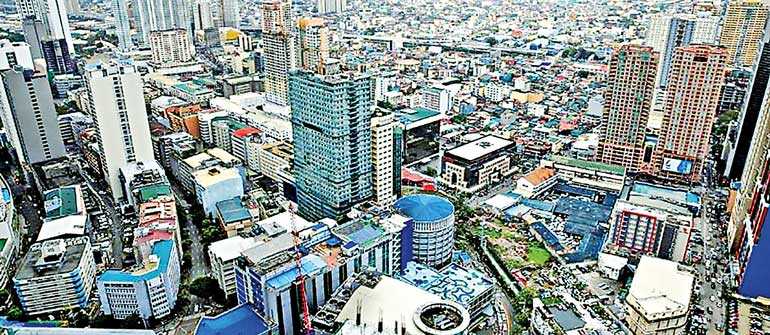Monday Dec 08, 2025
Monday Dec 08, 2025
Monday, 30 September 2019 00:00 - - {{hitsCtrl.values.hits}}

FILE PHOTO: Construction of new buildings alongside older establishments is seen within the business district in Makati City, metro Manila, Philippines, 25 January 2017 - Reuters
Manila (Reuters): Escalating trade tensions between the United States and China have darkened the outlook for developing Asia, with the region expected to grow slower than previously predicted this year and next, the Asian Development Bank said last week.
Developing Asia, a group of 45 countries across Asia and the Pacific, will likely grow 5.4% this year and 5.5% next year, down from the 5.7% and 5.6% growth forecast in July, the ADB said in an update to its Asian Development Outlook report.
Growth in the region was 5.9% in 2018.
“The People’s Republic of China–US trade conflict could well persist into 2020, while major global economies may struggle even more than we currently anticipate,” Yasuyuki Sawada, ADB’s chief economist, said in a statement.
The dispute between the world’s two largest economies has dragged on for well over a year, with both adding tariffs worth billions of dollars on each other’s goods. High level talks between the two are scheduled for early October.
China’s economy will probably grow 6.2% this year, the ADB said, weaker than its 6.3% projection in July. Growth in the Chinese mainland is projected to cool further to 6.0% in 2020. China is targeting 6.0% to 6.5% growth in 2019.
Along with weakening trade momentum, the Manila-based lender also sees declining investment as a major risk to the region’s growth prospects.
By sub-regions, South Asia will remain the fastest growing in Asia Pacific, even after the ADB trimmed its 2019 outlook to 6.2% from 6.6% as it also slashed its growth estimate for India to 6.5% from 7.0%. ADB maintained India’s 7.2% growth projection for next year.
Southeast Asia is also expected to end 2019 on a weaker note, with growth likely to slow to 4.5% compared with a previous forecast of 4.8% and from last year’s 5.1% pace. Growth next year is seen picking up to 4.7%, but still lower than the ADB’s 4.9% estimate in July.
Developing Asia will also have to deal with slightly higher prices due to rising food costs, the ADB said. It raised its 2019 and 2020 inflation forecasts for the region to 2.7% from 2.6% earlier.